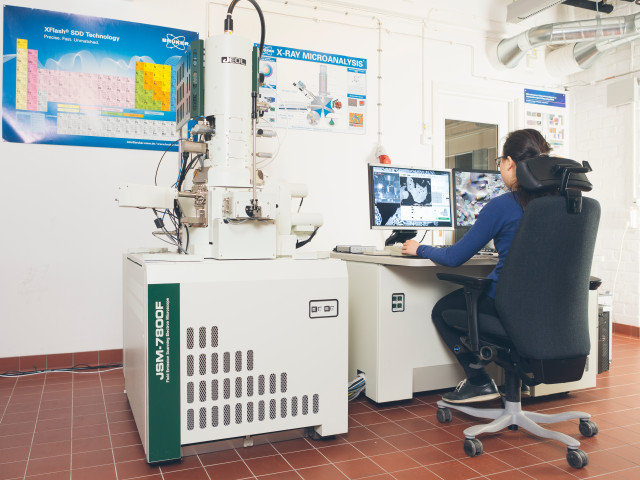The course covers fundamental theory of phase transformations, fundamental thermodynamics of phase diagrams and application of binary and ternary phase diagrams, formation of micro- and nanostructures through nucleation and growth, crystalline and amorphous solidification, transformations in solid phases, relaxation phenomena, equilibrium and transformations in metallic and ceramic materials.
MH2038 Micro and Nano Structures in Materials 6.0 credits

Information per course offering
Course offerings are missing for current or upcoming semesters.
Course syllabus as PDF
Please note: all information from the Course syllabus is available on this page in an accessible format.
Course syllabus MH2038 (Autumn 2020–)Headings with content from the Course syllabus MH2038 (Autumn 2020–) are denoted with an asterisk ( )
Content and learning outcomes
Course contents
Intended learning outcomes
After the course the student should be abel to:
- identify characteristic structure elements in micro- and nanostructures of crystalline materials and know how to analyze the most common structures in metallic and ceramic materials.
- interpret the microstructure of a material and by using phase diagrams be able to draw reasonable conclusions about how the material has been treated and which phase transformations that have occurred.
- explain and motivate which factors; composition, temperature cycle, deformation etc., that favour the formation of different structures.
- make reasonable assumptions of ternary phase diagrams based on information from binary phase diagrams.
- explain and motivate which fundamental chemical and physical quantities that are of importance for different types of phase transformations; diffusion, surface energy, coherency, thermodynamic driving force, thermal fluctuations etc.
- explain and schematically construct Gibbs energy diagrams and explain the geometrical significance of e.g. driving force for the initial precipitation of one phase from another, the effect of surface energy on a two phase equilibria.
- calculate e.g. driving force for the initial precipitation, critical radius for nucleation, growth rates, segregation during solidification, grain growth, rate of phase transformation and combine these to solve more complex problems using reasonable assumptions.
- apply TTT and CCT diagrams to analyse what takes place in a material during e.g. heat treatment and also be able to motivate how these diagrams are affected by thermodynamic and microstructural factors.
- explain the thermodynamic and kinetic factors that favours amorphous materials.
Literature and preparations
Specific prerequisites
MH1024 Fundamental Materials Science
MH1010 Basic thermodynamics
or equivalent
Literature
You can find information about course literature either in the course memo for the course offering or in the course room in Canvas.
Examination and completion
Grading scale
A, B, C, D, E, FX, F
Examination
- INL2 - Assignments, 1.0 credits, grading scale: P, F
- LAB2 - Laboratory work, 1.0 credits, grading scale: P, F
- TENA - Written exam, 4.0 credits, grading scale: A, B, C, D, E, FX, F
Based on recommendation from KTH’s coordinator for disabilities, the examiner will decide how to adapt an examination for students with documented disability.
The examiner may apply another examination format when re-examining individual students.
If the course is discontinued, students may request to be examined during the following two academic years.
Other requirements for final grade
Laboratory work, assignments, and written examination
Examiner
Ethical approach
- All members of a group are responsible for the group's work.
- In any assessment, every student shall honestly disclose any help received and sources used.
- In an oral assessment, every student shall be able to present and answer questions about the entire assignment and solution.
Further information
Course room in Canvas
Registered students find further information about the implementation of the course in the course room in Canvas. A link to the course room can be found under the tab Studies in the Personal menu at the start of the course.
Offered by
Main field of study
Materials Science, Materials Science and Engineering
Education cycle
Second cycle